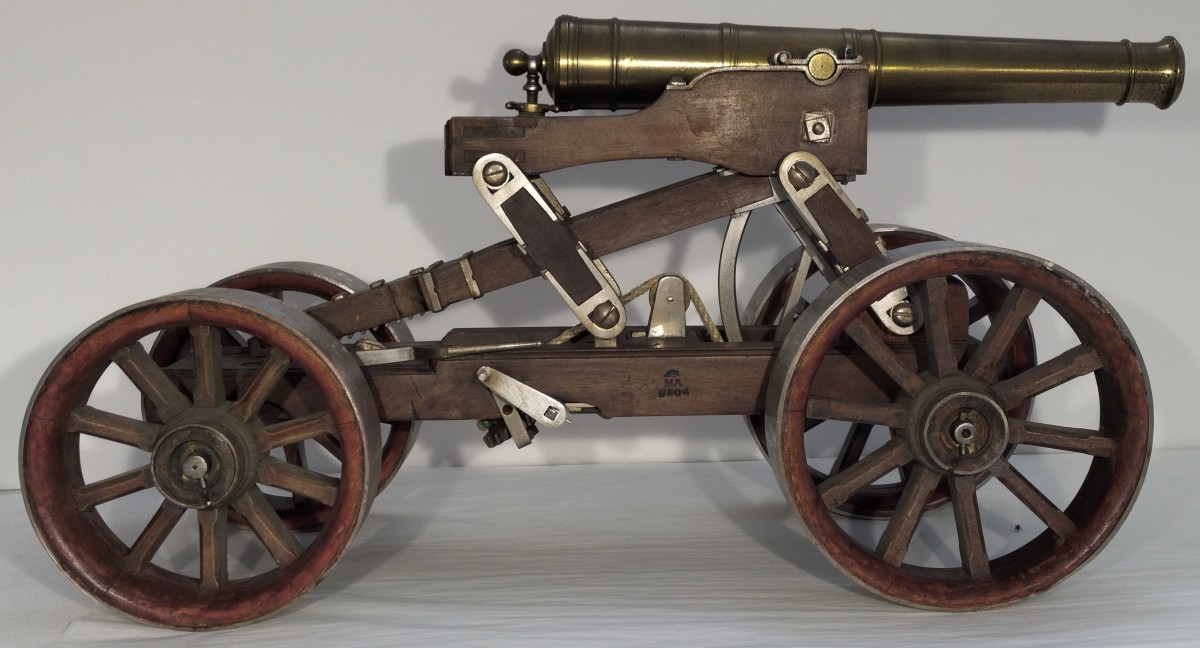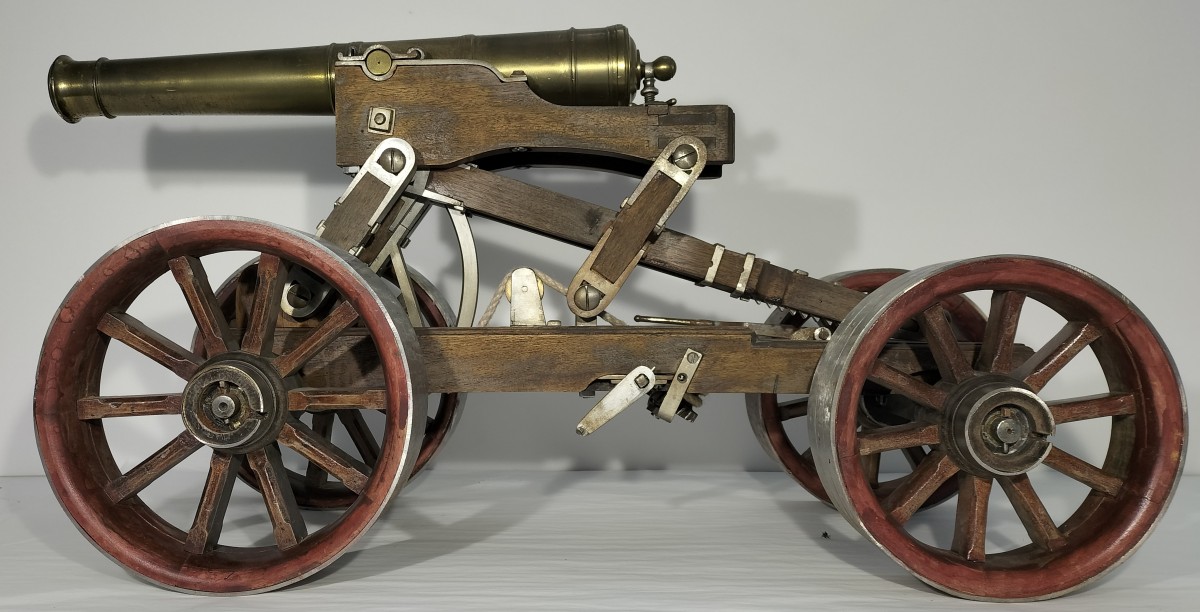Model 25/275 18-pounder Bronze Gun on a Travelling Carriage
The 1822 Royal Military Repository catalogue of the different models, arms, trophies and military machines in the Rotunda and Grounds at Woolwich lists 1147 artefacts including the model of the 18-pounder Bronze Gun on a travelling carriage. At that time, a large part of the collection were models which were used for education and training due to their functionality, ease of manufacture and cost of production. This was certainly true of the experimental artillery of which there are thirty artefacts in the collection including six inventions.
How would the travelling carriage have been used? It was intended as a disappearing gun - it would be presented over the parapet purely for firing and then it would be brought down for serving before being raised again for the next firing. In garrisons and forts until the nineteenth century artillery was fixed upon the parapet in an open stone casemate with a clear view of the field or in coast defence the sea. Preparing it for firing inevitably meant that men would be visible to an enemy rendering them vulnerable to incoming fire. It is unclear when artillerists first focussed their minds on solving this problem but perhaps towards the end of the eighteenth century. There were two possible ways to do this.
Firstly, to create a special carriage or, secondly, to protect the gun, carriage and detachment with an enclosed stone casemate such as that invented by the French military engineer General François Haxo around 1825. This was an expensive and time-consuming option so designing the carriage became the dream.
It was not until the Crimean War and the experiences there of Lieutenant Alexander Moncrieff who considering the same question called his carriage disappearing. Carrying out his own experiments at his own expense and using a 7-ton gun the system was fixed, successfully trialled, and introduced into British service around1868. We have the remains of a Moncrieff carriage superstructure in our collection. The intriguing 1822 catalogue entry reads Appears to be the Model of a project of a Gun Carriage, to enable the Gun to be loaded under cover of the Parapet, and to be fired en barbette: not finished. Its unfinished state raises the question as to why it was already in the Repository collection. Had the decision already been made that it was impractical and therefore not for service introduction? As far as is known it was not.
It is an exceptionally well-crafted model typical of the range of manufacturing skills evident in the Royal Arsenal. It is in good condition. The wood is stained mahogany with steel, rope and a bronze gun representing an 18-pounder which in service would have been cast iron. There is a winding lever, rope and pulleys so that in turning the lever the gun is raised upon two arms to its full height and then lowered to its resting point.
It is currently being cleaned and conserved by the Curator and will then be displayed at the museum in Wood Road.


